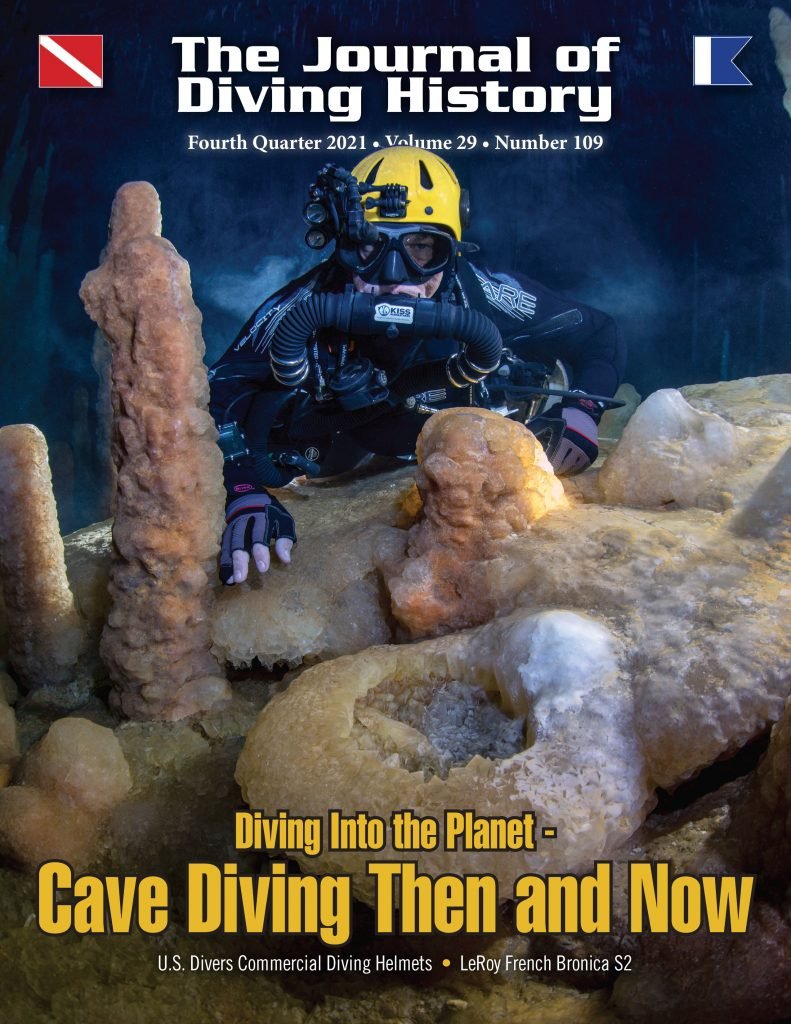Having been involved with the manned submersible industry for the past three decades I’m forever enthralled with early “atmospheric diving systems” (ADS) which through various designs provide a single atmospheric environment for either the single diver or multiple passengers within a manned submersible. The principle behind the concept is actually quite simple.. just provide a watertight vessel which is structurally capable of withstanding the increased hydrostatic weight increases with depth.. in sea water it works out to be about .4454546 psi per each 12 inches of submersion.. added to the original 14.7 psi of atmospheric pressure encountered at sea level.
Simple in concept – unbelievably challenging in practical application.
The pressure, always the demon lurking below for divers.. is also the monster clawing and raking at equipment immersed into waters.. and the deeper one travels.. the meaner that monster behaves. Some very basic math utilizing the formula mentioned above for weight encountered per foot of descent calculates out at 15,961.7 psi at the very pit of the monster’s lair located at the Challenger Deep of the Mariana Trench of the South Pacific near Guam.
At those depths and pressures, every single detail of craft design matters.. materials, structural integrity, even the jacket coating on wires must withstand the immense forces which can literally shove seawater directly through them if they aren’t up to the sheer loads exerted on them.
With those thoughts in mind,.. each time I’d radio in my intentions to initiate a dive and request authorization from topside to activate the ballast control valves of whatever machine I was skipper of, as that craft settled in and began its descent, the familiar clicking, mild pops and creaks as the craft’s components were being crushed together always get your attention as I’d listen intently to insure that none of those pressure noises were any that were unfamiliar or out of the ordinary..
As my good friend and diving legend Dr. Andy Rechnitzer reminded me of many years ago.. “if you have a catastrophic pressure vessel failure.. it’s like dropping a delicate glass Christmas tree ornament on a concrete floor,.. it’s all over in an instant… and we don’t need that”
No Andy, we don’t.
Taking that into consideration, I’ve always been incredibly fascinated with early engineering and design attempts at deep water capable craft.. all in an effort to eliminate the effects of the pressure monster lurking below.. there always has to be the first… and you’ve got to admire those who were at the tip of the spear.. because they were also those who were going to learn through experience.. and what I’ve learned about that is..
Good judgement comes from experience, while experience comes from bad judgement…
An awful lot of important lessons are learned along the way for those at the tip of the spear.. and when it comes to early ADS equipment.. those lessons have included a fair amount of unfamiliar clicking, mild pops and creaking.
Regardless, I possess a tremendous degree of respect and admiration for those early deep submergence pioneers.
They paved the way when most of what needed to be known about the business was being learned real time.
One of my all time favorite machines was the first ADS suit designed by brothers Alphonse and Theodore Carmagnolle from Marseille, France in 1878 and patented in 1882.
It was bold, innovative, ambitious and a leaker.. so essentially as a working tool it was a total flop.. but in terms of being a learning platform it was a huge success because it demonstrated what not to do design-wise in the future.. and that’s how progress and engineering evolution begins.
Just imagine if Orville and Wilbur Wright could stand before an F-22 Raptor with all its computer assisted flight controls and 1,534 miles per hour capability. As materials, engineering and computer controlled machining of parts evolve, the deepest parts of the ocean will become less and less inaccessible for the masses.. there are already plans in the works to take tourists to the resting place of the Titanic.. perhaps not far off will be day trips to the monsters lair near Guam?
Who knows? For me.. I’m happier to live in that magical time and place where technology is good enough to make those excursions accessible, but still primitive enough that they aren’t available to anyone whose only qualifying credential is a thick wallet… but, that’s just me.

